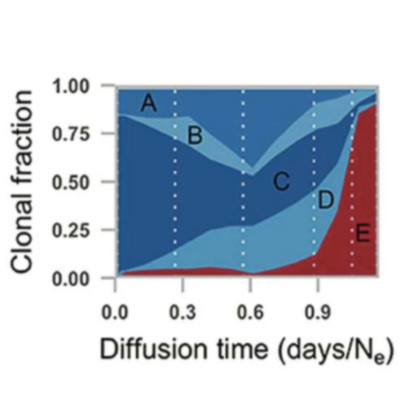Abstract
Progress in defining genomic fitness landscapes in cancer, especially those defined by copy number alterations (CNAs), has been impeded by lack of time-series single-cell sampling of polyclonal populations and temporal statistical models1-7. Here we generated 42,000 genomes from multi-year time-series single-cell whole-genome sequencing of breast epithelium and primary triple-negative breast cancer (TNBC) patient-derived xenografts (PDXs), revealing the nature of CNA-defined clonal fitness dynamics induced by TP53 mutation and cisplatin chemotherapy. Using a new Wright-Fisher population genetics model8,9 to infer clonal fitness, we found that TP53 mutation alters the fitness landscape, reproducibly distributing fitness over a larger number of clones associated with distinct CNAs. Furthermore, in TNBC PDX models with mutated TP53, inferred fitness coefficients from CNA-based genotypes accurately forecast experimentally enforced clonal competition dynamics. Drug treatment in three long-term serially passaged TNBC PDXs resulted in cisplatin-resistant clones emerging from low-fitness phylogenetic lineages in the untreated setting. Conversely, high-fitness clones from treatment-naive controls were eradicated, signalling an inversion of the fitness landscape. Finally, upon release of drug, selection pressure dynamics were reversed, indicating a fitness cost of treatment resistance. Together, our findings define clonal fitness linked to both CNA and therapeutic resistance in polyclonal tumours.
